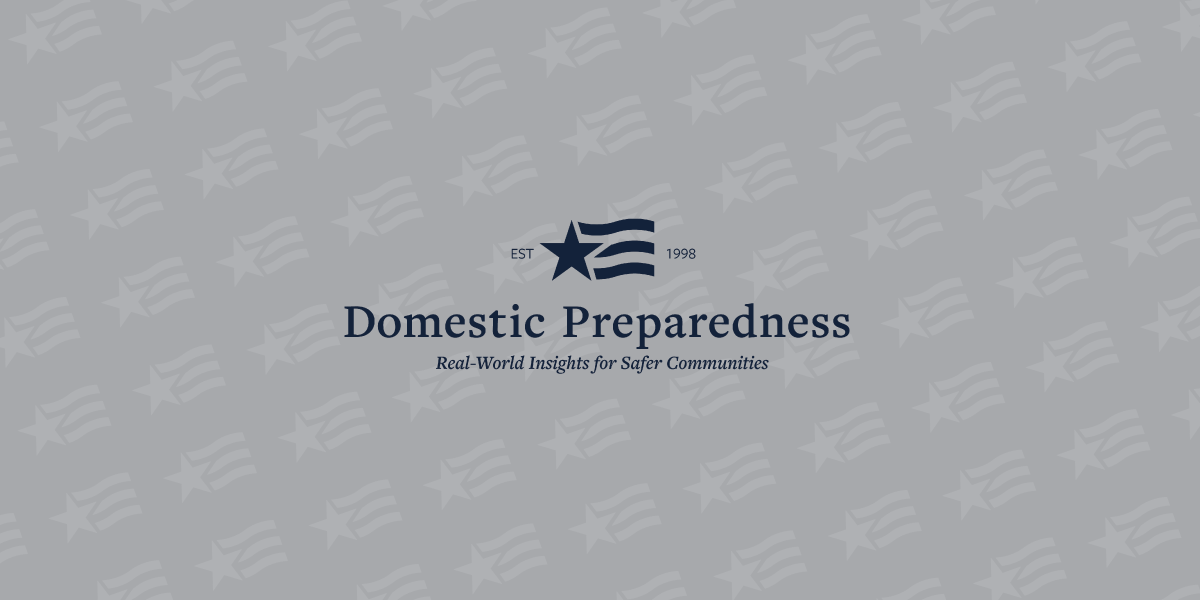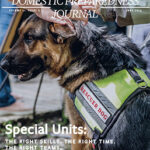The most threatening aspects of pandemics are their unpredictability and asymmetric spread. Other catastrophic events – e.g., earthquakes, hurricanes, floods, even man-made disasters such as terrorist attacks – usually begin and end within an easily defined period of time and in a specific geographic area. Considering their duration and scope, pandemics have the potential to advance very quickly to the level of catastrophic events because their spread can be almost instantaneous. The initial outbreak often is not recognized, in fact, until it has reached a tipping point – i.e., when very specific symptom patterns are recognized and/or a significant number of citizens become afflicted with a recognizable illness.
Since the spread of infectious diseases heed no geographical boundaries, it is difficult to predict the ultimate extent of pandemics in terms of morbidity and mortality rates. The added complexity involved in preparing for a medical surge in this context, therefore, can make the preparation for a pandemic an extremely daunting task. In addition, a pandemic’s prolonged unpredictability can create widespread fear as the infection continues to spread and area hospitals become overwhelmed. To help mitigate the spread of fear, and/or of the illness itself, various types of “barriers” – e.g., the establishment of alternative healthcare sites – can and should be built and maintained to preclude the hospitals already involved from becoming incubators of the disease and fostering its spread.
Although the variable duration and extent of pandemics create unique challenges, they also generate certain opportunities to alter the course of these public health emergencies – primarily by: (a) developing a better understanding of how the disease spreads; and (b) introducing the medical protocols needed to prevent the spread, to uninfected individuals, of the specific disease encountered, thus creating the barriers referred to above. Allowing for flexibility in facilitating a response to pandemics and building upon the foundation of an effective protocol to react to seasonal epidemics – influenza is the most obvious example – are the core tenets of any effective medical-surge preparedness plan.
It is particularly important to remember that most pandemics disproportionally affect healthcare professionals – who themselves are most often exposed to and in the closest proximity to a disease – and for that reason alone can quickly diminish a hospital’s ability to adequately respond to mass-casualty surges. The most effective preparedness plans to cope with pandemics include anticipating the needs prior to a medical surge event to ensure that: (a) the increased capacity projected does not paralyze and/or adversely affect other hospital operations; and (b) the fear of a disease outbreak does not in itself impede the abilities of healthcare professionals to carry out their responsibilities. The availability of alternative healthcare sites will provide the primary barrier that alleviates such concerns and ensures that hospitals can respond effectively while protecting all of the parties involved in fighting the pandemic.
Following are some additional specifics related to the three primary barriers used to prevent the further spread of a pandemic:
Barrier 1 – Alternative Healthcare Sites
Hospital emergency departments (EDs) are frequently overwhelmed by the increased patient volume caused by a pandemic, especially when ED overcrowding is already a concern. The establishment and use of alternative healthcare sites – at local walk-in clinics, for example, or even at schools or local community centers – to serve as primary triage facilities for patients exhibiting disease-related symptoms would create the first barrier required to limit the extent of a medical surge. These and other local sites can create the support network needed to thoroughly assess and prioritize the medical condition and treatment recommended for the persons affected.
Using alternative healthcare facilities as primary triage sites also helps protect the patients with pre-existing illnesses who are already in the hospital. Routine cases can be treated at the alternative sites while more critical cases are sent to the ED – with the proper protocol needed to prevent infection spread – thus preventing the ED from becoming overrun while at the same time freeing vital hospital resources for those requiring higher levels of care.
When designating locations to serve as alternative healthcare sites, the proximity of such sites to local hospitals must be carefully considered. The sites should be far enough away to reduce the possibility of an infectious spread to the hospital’s current patients (and medical staff), but still close enough to facilitate the safe transfer of critically ill patients. Admittedly, the logistics involved in such situations can be very complex, but the process of planning and developing the sites will help to establish the essential partnerships needed between hospitals and their community partners. Such partnerships not only provide the cornerstone opportunity needed for securing a strong medical workforce but also can help significantly in effectively mitigating the overall threat caused by a pandemic.
Barrier 2 – The Protection of Healthcare Professionals
Pandemic barriers are only as effective as the strength, both in number and in health, of the medical workforce directly involved. Maintaining the workforce requires not only coping with the almost inevitable attrition of healthcare professionals but also securing and expediting the credentialing procedures involving: (a) personnel from other hospitals; and (b) the volunteers also needed to help with many pandemic response activities. The protection of healthcare professionals is an integral part of pandemic preparedness – and, therefore, the second barrier needed in the fight against the spread of an infectious disease.
As the frontline defenders in the battle against infection, healthcare professionals are therefore, by definition, the most exposed population. Accordingly, they must be equipped with the best defenses available to protect themselves – including, but not limited to: quick access to antivirals; routine on-site vaccinations; and the immediate availability of proper PPE (personal protective equipment) gear. To maximize the effectiveness of these protective priorities a judicious investment in the appropriate level of training, outreach, and education is also needed. Previously tested strategies for procuring and securing sufficient quantities of PPE, vaccines, and antivirals for healthcare professionals – before they are absolutely needed – should be developed in coordination with local public health officials.
Antivirals and vaccines may well be the most valuable tools available in preventing pandemic spread, so it is particularly important that a lack of education and/or availability not limit their use, especially in the very community that is directly responsible for their distribution. In addition to making these tools available on short or no notice, healthcare professionals must be informed, beforehand, of the availability of these resources, and of their importance. Strong communication channels within the hospital – which now include the use of social media to engage healthcare professionals – not only inform these professionals but also help to dispel untruths and unfounded rumors, which can be equally as important. Nothing is more effective at neutralizing proper planning, probably, than the toxic spread of erroneous information, which can quickly erode the barrier created by the recruiting and training of a strong medical workforce.
Barrier 3 – Standards of Healthcare
In any health crisis resulting in a medical surge, the potential exists that the healthcare needs of patients will exceed the resources available. The third barrier, therefore, addresses the standards of healthcare required to distribute resources in the ways that would most effectively reduce the morbidity and mortality rates of the population as a whole. Doing so, though, might inevitably mean that not every patient will receive care that would be quite as thorough as might reasonably have been expected in a non-surge situation. For that reason alone, it also is particularly important that preparedness planning not only include discussions of the standards of care available and required, but also establish the guidelines that must be followed governing how treatment protocols may have to be modified in surge situations so as to best serve the population as a whole. Resources and personnel are never limitless, which means that distribution failures and personnel attrition are inevitable facts of life; reaching early agreement on predetermined resource allocations sets the stage for dealing with worst-case scenarios more effectively.
As the number of emerging infectious diseases detected in populated areas continues to increase, it seems inevitable, therefore, that there will be more pandemics in the foreseeable future. With limited means of predicting, much less preventing, pandemics, preparedness planning becomes even more essential. The U.S. Centers for Disease Control and Prevention (CDC) has taken the lead in this area by creating improved standards for information exchange – primarily through the CDC’s own Public Health Information Network. The CDC also has made available a standard template for preparedness planning – namely, the 2011 list of Public Health Preparedness Capabilities, developed by the CDC’s Office of Public Health Preparation and Response. This resource provides the detailed guidance needed for the development of a strong and adaptable healthcare system that incorporates the primary barriers needed to block or at least mitigate the spread of infection. The same CDC guidelines also should help improve the response mechanisms needed to cope with the extremely difficult situations that will inevitably develop during future medical surges resulting from disease outbreaks.
____________
For additional information on: The CDC’s Public Information Network PHIN, visit https://www.cdc.gov/phin/php/index.html The CDC Office of Public Health Preparedness and Response, visit https://web.archive.org/web/20130331180458/https://www.cdc.gov/phpr/capabilities/DSLR_capabilities_July.pdf

Patrick P. Rose
Patrick P. Rose, director for pandemic and catastrophic preparedness at the National Association of County and City Health Officials, holds a Ph.D. in infectious diseases and is a subject matter expert on national security issues related to public health security. He works with federal and local stakeholders to address requirements and gaps that produce vulnerabilities in public health security. In addition, he supports efforts domestically and internationally in the field and at the policy level to reduce the proliferation of biological weapons and to increase public health security awareness. These efforts include promoting greater engagement in the Global Health Security Agenda. He is an alumnus of the Emerging Leaders in Biosecurity Initiative and serves as an adjunct assistant professor at the University of Maryland Department of Epidemiology and Public Health.
- Patrick P. Rosehttps://domprep.com/author/patrick-p-rose
- Patrick P. Rosehttps://domprep.com/author/patrick-p-rose
- Patrick P. Rosehttps://domprep.com/author/patrick-p-rose
- Patrick P. Rosehttps://domprep.com/author/patrick-p-rose

Katherine Duncan
Katherine Duncan is a fourth-year medical student at the University of Maryland’s School of Medicine. She has served as a member of numerous medical aid groups traveling to developing countries to treat patients in medical surge situations. She has also represented her medical school in discussions with state legislators concerning physician shortages, loan-assistance repayment programs, and Medicare reimbursement rates. After graduating, she plans to continue her medical training with a residency in Ophthalmology at the University of Maryland.
- Katherine Duncanhttps://domprep.com/author/katherine-duncan






